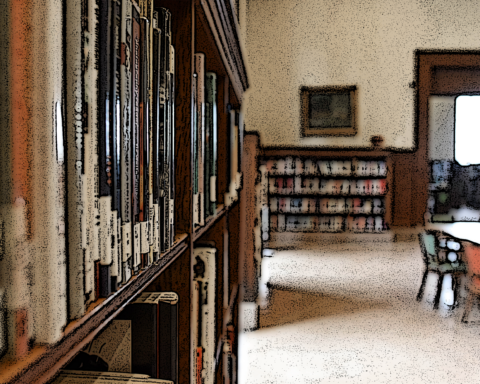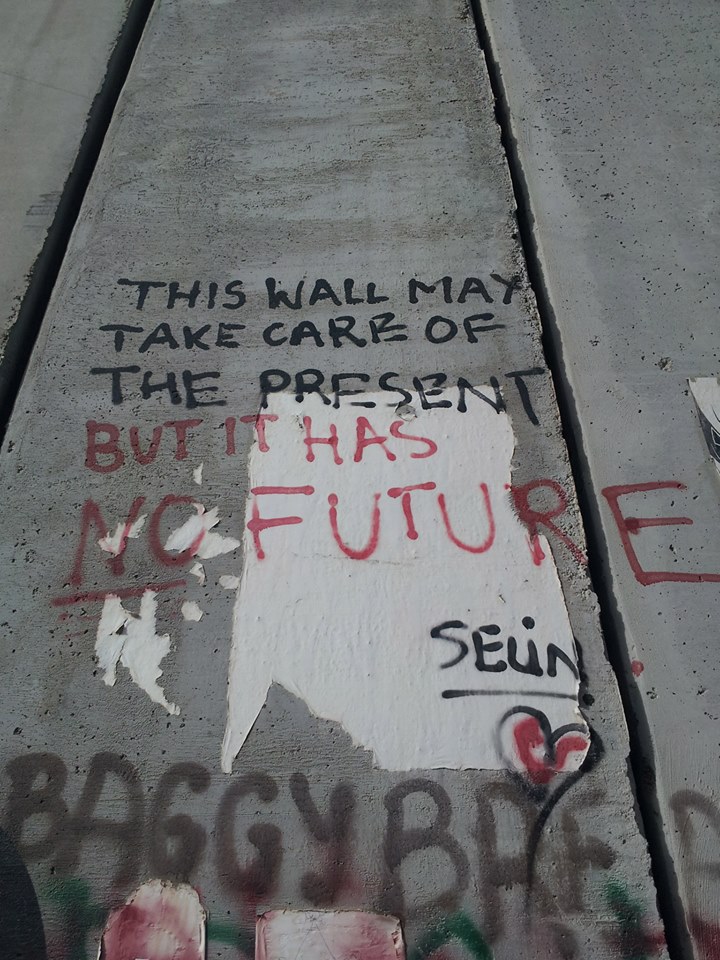A Primer on Healing and Reconciliation and The Presbyterian Church in Canada
Editorial Note:This contribution speaks particularly to items 11-08 and 11-17 before the 222nd PC(USA) General Assembly, which call for an apology to First Peoples in the US and for a study of the Doctrine of Discovery, but it also addresses matters of reparations and the work of Truth and Reconciliation commissions. Our Northern sibling’s experience may have lessons for us, though these concerns are not new for either church. Their story goes beyond the work of a Truth and Reconciliation Commission and accompanying churchwide program to include a statement on Native Spirituality in 2015 and ecumenical consideration of the Doctrine of Discovery.
The Residential Schools System and The Presbyterian Church in Canada

The Presbyterian Church in Canada began mission work with Indigenous peoples in the mid-1860s, and a prominent aspect of this work was education. Day schools were set up on many reserves, but by the mid-1880s a system of off-reserve schools was set up by the Canadian federal government. The Presbyterian Church in Canada partnered with the government to operate Indian Residential Schools beginning in the mid-1880s and concluded in 1969 when the schools became the full responsibility of the Canadian federal government. [1] The schools disrupted Indigenous families and communities and deliberately prevented the transmission of language, custom, spirituality, and cultural teachings from parent to child. These were not the side effects of a well-intentioned system. A primary purpose of the Residential Schools System was to separate Indigenous children from the influence of their families and communities so as to destroy their culture. [2] The environment of the schools was one of obedience and acquiescence intended for the purpose of assimilation.
The Presbyterian Church in Canada ran 11 residential schools, mostly in western Canada. Following Church Union in 1925, administration of many of these schools was transferred from the Presbyterian Church in Canada to the United Church of Canada. Some schools had closed before then. After 1925, the Presbyterian Church in Canada ran two schools: Cecilia Jeffrey near Kenora, Ontario and Birtle in western Manitoba. [3]
A Confession in Two Senses
In 1976, the Presbyterian Church in Canada joined the ecumenical group Project North, a predecessor of the Aboriginal Rights Coalition, now part of KAIROS: Canadian Ecumenical Justice Initiatives. [4] In the 1980s, stories of abuses suffered by students at residential schools began to be heard. In 1987, the church signed the pastoral statement “A New Covenant: Towards the Constitutional Recognition and Protection of Aboriginal Self-Government in Canada.” In 1991, a report to the General Assembly notes that justice, peace, and truth are required in dealing with Aboriginal rights issues. In typical Presbyterian fashion, that Assembly authorized work on a confession for the actions and impacts of the residential schools. That Confession was adopted by the General Assembly in 1994. [5]

Photo Courtesy of the Presbyterian Church in Canada Archives
The Confession is a theological statement. It was viewed as the most appropriate form for admission of wrongdoing and harm done. It is offered to God and in the presence of all people, including Indigenous people. It is not a doctrinal standard or subordinate standard of the Presbyterian Church in Canada. It is, however, the foundation of the church’s work on healing and reconciliation with Indigenous people. It is treated by those who support the church’s healing and reconciliation work as a living document outlining a covenant for right relationships between Indigenous and non-Indigenous people. In technical language, the Confession can be seen as performative speech, enacting when delivered the work of confession and repentance, often linked to “Gestures of Reconciliation” and “Calls to Action” appropriate to particular peoples and areas.
___________________________________________
The Confession is a theological statement. It was viewed as the most appropriate form for admission of wrongdoing and harm done. It is offered to God and in the presence of all people, including Indigenous people.
___________________________________________

Indigenous elders frequently observe that much of the harm done by church mission ventures to their people goes beyond specific survivors and their families. Sin hurts God, it hurts all people, and it harms the wider community. There is an ongoing need for church members to recall the Confession and for church members to offer the Confession to Indigenous people who are living with the scars of residential schooling. Where there is hurt and brokenness, confession is a needed part of healing.
The Confession was presented to Mr. Phil Fontaine, then Grand Chief of the Assembly of Manitoba Chiefs, on October 8, 1994 at The Forks, in Winnipeg Manitoba. Winnipeg is geographically located between the Cecilia Jeffrey and Birtle schools. The First Nations communities in Mr. Fontaine’s constituency are closest to and, most likely, the communities most impacted by the Cecilia Jeffrey and Birtle schools.
The Confession has been translated into Dakota, English, French, Korean, Ojibwe, and Plains Cree. The Presbyterian Church has congregations that speak English, French, and Korean. The Confession was translated so members of the church will know this history. Dakota, Ojibwe, and Plains Cree are spoken in the communities that had members who attended Cecilia Jeffry and Birtle schools. Acknowledging the harm done by assimilation policies and other legacies of the Indian Residential Schools, the translation of the Confession into Indigenous languages recognizes and honours the importance of these languages to Indigenous culture and identity in Canada, and, as such, to all Canadians.
Indian Residential Schools Settlement Agreement and the Formation of a Truth and Reconciliation Commission (TRC)
In the 1990s a class action lawsuit was commenced by survivors of residential schools. The Indian Residential Schools Settlement Agreement (IRSSA) was approved by the parties in 2006 and approved by the courts in 2007. It is the largest class action suit in Canadian history costing over $5 billion CAD. At the time of the settlement there were 80,000 survivors still alive. Settlement parties included the Government of Canada, Catholic Entities (representing 57 religious orders and dioceses), Anglican, Presbyterian, and United Churches, and organizations representing survivors. [6]
 The Agreement included common experience payments for all survivors who attended one or several of the approximately 130 schools named in the settlement agreement which acknowledges the loss of language and culture experienced. An Independent Assessment Process (IAP) was established to resolve specific abuse claims. Between September 19, 2007 and April 30, 2016, 38,090 claims were filed; 91% have been resolved. The total compensations paid to date through the IAP are $3.005 billion CAD. [7]
The Agreement included common experience payments for all survivors who attended one or several of the approximately 130 schools named in the settlement agreement which acknowledges the loss of language and culture experienced. An Independent Assessment Process (IAP) was established to resolve specific abuse claims. Between September 19, 2007 and April 30, 2016, 38,090 claims were filed; 91% have been resolved. The total compensations paid to date through the IAP are $3.005 billion CAD. [7]
The settlement agreement also included a mandate for a Truth and Reconciliation Commission (TRC). The Commission was requested by survivors and strongly supported by the churches. It did not have judicial powers to prosecute criminal offenses but neither was any immunity granted. It was strictly voluntary. The Commission provided safe and culturally appropriate forums for anyone impacted by residential schools to share their truths and experiences of residential school. Three Commissioners were appointed: the Honourable Justice Murray Sinclair, Chief Wilton Littlechild and Dr. Marie Wilson.
___________________________________________
Truth and Reconciliation Commission Chair, Justice Murray Sinclair, has frequently said, “It’s education that got us into this mess, and education that will get us out.”
___________________________________________
In its six-year mandate, the Commission collected 7,000 statements from survivors, their family and community members, former staff and school workers, some of whom were church workers. These testimonies are part of the public record and are permanently housed at the National Centre for Truth and Reconciliation at the University of Manitoba in Winnipeg. Even as old stories are remembered, they become part of a new story for Indigenous and non-Indigenous Canadians.

The TRC organized seven national events and many community events. Representatives of the Presbyterian Church in Canada participated in every national event and several of the community events. Presbyterian Moderators attended every National Event. At each National Event, the Presbyterian Church in Canada made a Gesture of Reconciliation. These were statements and symbols of the church’s commitment to reconciliation. At the National Event in Vancouver, for example, the Gesture of Reconciliation included music produced by the Presbyterian Hummingbird Ministry in Vancouver, and at the National Event in Saskatoon, the church presented video statements of friendship and support from Presbyterians across Canada.
The Commissioners issued 94 Calls to Action in June 2015. The Calls to Action are recommendations for governments, churches, and all Canadians to deal with the legacy of residential schools and to build new relationships between Indigenous and non-Indigenous people based on mutual understanding and respect. The Commission ended in December, 2015. Notably, TRC Commissioners named the United Nations Declaration on the Rights of Indigenous Peoples as a framework for reconciliation. Both Canada and the United States governments have endorsed the UN Declaration. The Presbyterian Church in Canada has committed to implementing the UN Declaration and is developing a plan to live into this commitment.
Healing and Reconciliation Program
In 2006 the General Assembly adopted its Healing and Reconciliation Program. The Program focuses on church-based relationship-building initiatives between Indigenous and non-Indigenous people. This included establishing the Healing and Reconciliation Seed Fund, which has funded 69 initiatives for a total of $258,323. The fund is still active.

Photo Courtesy of the Presbyterian Church in Canada Archives
The Native Ministries Fund supported projects totaling $457,100. These projects support healing initiatives of seven Native Ministries in the Presbyterian Church in Canada.
Approximately 150 Presbyterians have participated in local leader training workshops. Local leaders are spread across many communities in Canada. They are volunteers who are responsible to communicate information about the healing and reconciliation program (new resources, events hosted by Indigenous people, information on the Truth and Reconciliation Commission, etc.) to the congregations in their communities.
___________________________________________
The act of deep and intentional listening creates sacred spaces where healing becomes possible.
___________________________________________
 The Presbyterian Church in Canada seeks opportunities to support community-based or Indigenous-led healing initiatives. One recent example of this is the participation of Presbyterians in “Opening the Doors to Dialogue.” Cayuga First Nation artist Sam Thomas received a grant from the Canadian Council of the Arts to bring together Indigenous and non-Indigenous people to learn about Iroquois beading and to spend time together, face to face, to discuss the legacy of residential schools. The act of deep and intentional listening creates sacred spaces where healing becomes possible. The event takes place in different communities. At each Opening Ceremony, a Presbyterian has read the Confession. Often, Indigenous peoples at these events have never heard the Confession before.
The Presbyterian Church in Canada seeks opportunities to support community-based or Indigenous-led healing initiatives. One recent example of this is the participation of Presbyterians in “Opening the Doors to Dialogue.” Cayuga First Nation artist Sam Thomas received a grant from the Canadian Council of the Arts to bring together Indigenous and non-Indigenous people to learn about Iroquois beading and to spend time together, face to face, to discuss the legacy of residential schools. The act of deep and intentional listening creates sacred spaces where healing becomes possible. The event takes place in different communities. At each Opening Ceremony, a Presbyterian has read the Confession. Often, Indigenous peoples at these events have never heard the Confession before.
The Healing and Reconciliation Program is housed in the Justice Ministries department of the Life and Mission Agency of the Presbyterian Church in Canada. Justice Ministries staff provide support for program outreach, education, and administration. Staff also support a national Healing and Reconciliation Advisory Committee.
Statement on Native Spirituality
In 2011, the General Assembly received two overtures requesting a theological framework for Aboriginal Spirituality. A Conversation Circle was formed to respond to the overtures. It included appointees from the National Native Ministries Council and the Church Doctrine Committee, a standing Committee of General Assembly, and Justice Ministries (Life and Mission Agency). The Circle identified several theological themes that formed the content of its response. The Circle’s report was adopted by the General Assembly in 2013. In 2015, the church issued a Statement on Aboriginal Spirituality that states: “It is not for the Presbyterian Church in Canada to validate or invalidate Aboriginal spiritualities and practices. Our church, however, is deeply respectful of these traditions. We acknowledge them as important spiritual practices through which Aboriginal peoples experience the presence of the creator God.” [8] This statement was prepared in response to concerns raised by survivors of residential schools.
Ecumenism
 The Presbyterian Church in Canada works ecumenically as often as possible. This is done through ad-hoc groups such as the Ecumenical Working Group on Residential Schools, national organizations such as KAIROS and the Canadian Council of Churches, and through community-based groups. These circles are imperative forums for churches, including Indigenous peoples, to discuss the ongoing challenges, goals, and emergent issues for various healing and reconciliation initiatives.
The Presbyterian Church in Canada works ecumenically as often as possible. This is done through ad-hoc groups such as the Ecumenical Working Group on Residential Schools, national organizations such as KAIROS and the Canadian Council of Churches, and through community-based groups. These circles are imperative forums for churches, including Indigenous peoples, to discuss the ongoing challenges, goals, and emergent issues for various healing and reconciliation initiatives.
The Presbyterian Church in Canada and Ministry
There are three congregations made up of mostly Indigenous people in the Presbyterian Church in Canada. Two congregations are in Indigenous communities. One is in Winnipeg, Manitoba. The Presbyterian Church in Canada supports 8 national Native Ministries in western Canada. [9] Only a very small percentage of Presbyterians in Canada are Indigenous, though exact numbers are unknown.
Doctrine of Discovery
One of the TRC’s Calls to Action (No. 46) urges churches and faith groups to repudiate doctrines of superiority and names the Doctrine of Discovery as one such document. Several churches in Canada have done so including the Anglican, Lutheran, Friends (Quaker), and United churches. The Canadian Conference of Catholic Bishops has issued a statement about the Doctrine of Discovery and the Reformed Church in North America is preparing a study for its Synod. Mennonite Church Canada is studying the issue. The Presbyterian Church in Canada is currently considering its response to this Call to Action.
Concluding Thoughts
 The journey to reconciliation will take several generations. It is imperative to honour the courage of each survivor or intergenerational survivor of residential schools, respond to emergent issues (e.g. the call for a national inquiry into missing and murdered Indigenous girls and women), and work for the development of a nation-wide focus on right relationships between Indigenous and non-Indigenous people. TRC Chair, Justice Murray Sinclair, has frequently said, “It’s education that got us into this mess, and education that will get us out.” Commissioner Dr. Marie Wilson has said, “Reconciliation is a participant, not a spectator, sport.” This wisdom is central to the ministry of reconciliation for the Presbyterian Church in Canada. It is a sacred and ongoing journey that requires the ongoing support and participation of all its members.
The journey to reconciliation will take several generations. It is imperative to honour the courage of each survivor or intergenerational survivor of residential schools, respond to emergent issues (e.g. the call for a national inquiry into missing and murdered Indigenous girls and women), and work for the development of a nation-wide focus on right relationships between Indigenous and non-Indigenous people. TRC Chair, Justice Murray Sinclair, has frequently said, “It’s education that got us into this mess, and education that will get us out.” Commissioner Dr. Marie Wilson has said, “Reconciliation is a participant, not a spectator, sport.” This wisdom is central to the ministry of reconciliation for the Presbyterian Church in Canada. It is a sacred and ongoing journey that requires the ongoing support and participation of all its members.
________________________________
[1] An Administrative History of the Presbyterian Church in Canada’s role in the Indian Residential Schools System was prepared by Presbyterian Church Archives and is online at Presbyterian.ca.
[2] Truth and Reconciliation Commission of Canada, “They Came for the Children,” 2012, p.1.
[3] Much of the Presbyterian Church of Canada entered the 1925 union that created the United Church of Canada; this article speaks from the experience of the continuing Presbyterian denomination.
[4] KAIROS: Canadian Ecumenical Justice Initiatives KAIROS unites 11 Canadian churches and religious organizations in a faithful ecumenical response to the biblical justice imperative. Members include: The Anglican Church of Canada; Canadian Catholic Organization for Development and Peace; Canadian Conference of Catholic Bishops; Canadian Religious Conference; Christian Reformed Church in North America (Canada Corporation); Evangelical Lutheran Church in Canada; Mennonite Central Committee of Canada; The Presbyterian Church in Canada; The Primate’s World Relief and Development Fund (PWRDF); Religious Society of Friends (Quakers); The United Church of Canada.
[5] Online at Presbyterian.ca/healing.
[6] The settlement does not include schools run in Newfoundland and Labrador or day schools.
[7] Indian Residential Schools Adjudication Secretariat, “Information – Adjudication Secretariate Statistics”, online at http://iap-pei.ca/information/stats-eng.php, viewed 24 May 2016.
[8] The Presbyterian Church in Canada Statement on Aboriginal Spiritual Practices, January 2015, online at http://presbyterian.ca/2015/01/29/statement-aboriginal-spiritual-practices/
[9] They are based in Kenora Ontario, Winnipeg Manitoba, Saskatoon Saskatchewan, Mistawasis Saskatchewan, Edmonton Alberta, Vancouver British Columbia, Cariboo-Chilcotin region in Central British Columbia and Cowichan territory on Vancouver Island.
*****
AUTHOR BIO: Katharine Masterton has served as the program coordinator for Justice Ministries, The Presbyterian Church in Canada, since 2007. She is a theology student at Knox College, Toronto School of Theology and a member of Glenview Presbyterian Church in Toronto, Ontario.
Read Item 11-08: “On Offering an Apology to Native Americans, Alaska Natives, and Native Hawaiians”.






Unbound Social